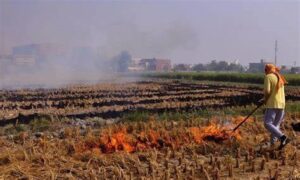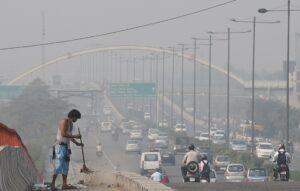Rural localities: Villages or rural places are country-side and scenic localities that function under formal or informal governments. The open pastures and fertile land are occupied with less population size and population density with homogenous cultural heritage. These areas sustain natural resources and the chief livelihood of people include agriculture, plantations, animal husbandry and farming, sericulture, apiculture, logging timber, fresh water fisheries, and fishing in sea water.

(picture courtesy: pollution in rural areas – Bing images)
Urban localities: Cities or urban places are permanent localities that function under formal institutions of government, with land cover occupied with large population size and high population density with social heterogeneity. These areas comprise structures and artifacts of human construction and the chief occupation of people include governance, administration, economy, information technology, and research which are other than agriculture.

It is a common notion that “Rural areas-Villages are less polluted than Urban areas-Cities.” The reasons behind this concept are as follows:
• The population density i.e., number of people per unit land area, is greater in cities than in villages. In general, the rate of increase in population is directly proportional to the rate of pollution.
• In cities, a greater number of industries, factories, coal power plants, and vehicles, that produce more emissions of pollutant gases which are major cause of air pollution are present than in villages.
• Most of the major cities of world are situated near the fresh water reserves like rivers and lakes. The industrial waste effluents are released into the flowing waters that reach seas and oceans causing fresh water and ocean water pollution.
• In cities, urbanization results in the litter, utility, plastic, and construction waste generated from houses, offices, establishments, hotels, shops, schools, etc, which is important source of land pollution.
• Cities are developed by deforestation and possess less greenery and plantations due to urbanization. It is well-known that plants and trees help to prevent pollution. So, less plantation results in increased pollution and less rainfall in cities.
• The street traffic sounds, construction sounds during building structures and in factories like drilling, sounds from flights in airports, and heavy machinery in industries create more noise pollution in cities.
• The main sources of radiation pollution are the nuclear wastes from the nuclear plants and reactors engaged in the production of electricity and other radioactive installations.
• Additionally, radiation machines and instruments used in research laboratories, hospitals, and diagnostic labs, which are mostly situated in the cities cause high radiation pollution.
It is understandable that the presence of lesser number of industries, factories, vehicles, etc., and higher number of plantations in villages make them less polluted than cities. However, we must not quickly jump into conclusions that “Cities are fundamentally at odds with environmental and natural resources quality and safety.” We must be aware about the other side of the coin, regarding the recent developments and pollutant factors of village environments.
Of course, the cities are at risk of greater magnitude and severity of damage due to environmental pollution than the villages. On the other hand, there exist multiple counterexamples that report the vulnerability of villages to the hazards caused by pollution. Let us consider some points that focus on environmental contamination in villages:
• Rural poverty is more prevalent owing to crop loss and high agricultural investments. Cities are relatively economically sound and abundant in opportunities for poor people to improve their economical status. In turn, this improves affordability of good quality products, consumables, and amenities.
• Ecological disruption and deforestation are common in both villages and cities. In cities, urbanization and industrialization cause environmental degradation. While in villages, agriculture, fisheries, and rearing of domestic animals replace the natural ecosystem.
• Intensive agriculture and maintenance of farms and fruit trees require heavy inputs of artificial hormones, chemicals, fertilizers, pesticides, insecticides, water, and energy to operate large mechanical engines.
• Livestock raising and fisheries demand artificial feed and hormones, antibiotics, medical treatments, and heavy machinery and equipment that run on fossil fuels.
• In recent times, the excessive use of artificial electrical and electronic products, plastics, chemicals, volatile organic compounds, and antibiotics and the lack of purification facilities in villages increased contamination of soil, water, and air.
• Relocation of heavy industries, coal processing, cement production, metal mining, brick kilns etc. to suburban and rural belts release harmful and toxic by-products and compromise the quality and quantity of natural resources.
• In villages, lack of awareness and education lead to increase in population, due to high number of children per family. To some extent urbanization reduces the population owing to reasons including the high expenditure and cost of living in cities and better access to education, employment, and contraception.
Rightfully, the quintessential essence of any country lies in its rural lands. They epitomize the diversity, zest, culture, and vibe of every nation. However, we are oblivious and ignorant about the problem of environmental pollution in villages. The reality of rural areas is far complicated than what we envision about them as the lush green and beautiful landscapes. Moreover, almost all mitigation programs prioritize the urban issue, and rural pollution remains unaccounted and unimportant.
Now a days, authorities and various non-profit communities via public-private partnership schemes have launched several programs to mitigate the problem of rural pollution. We can support these activities by collection of concrete and reliable data that point towards the severity of the issue and spread global awareness. We can achieve this by installing low-cost sensors and monitors to collate and analyse the data using air, water, and soil samples from villages. Moreover, there is an emerging need for holistic research on rural pollution. The authorities need to draft effective schemes and ensure the supervised implementation and evaluation of the programs to mitigate the rural pollution.
